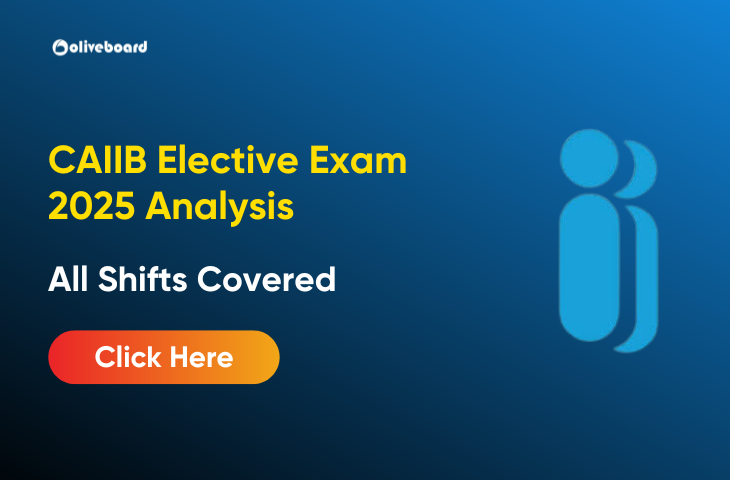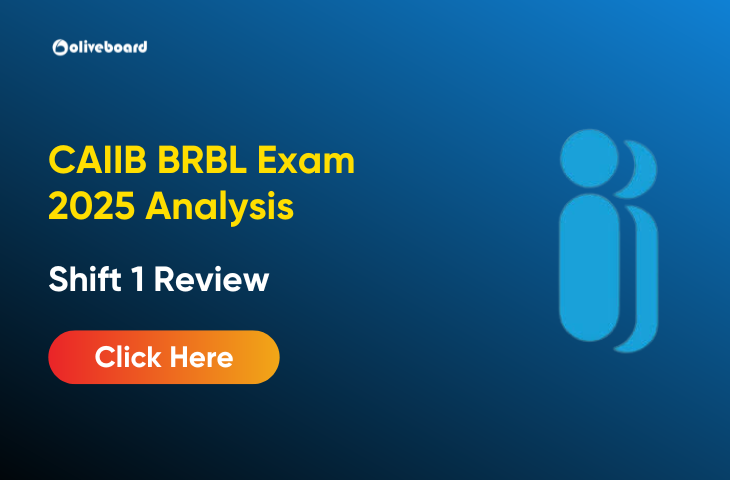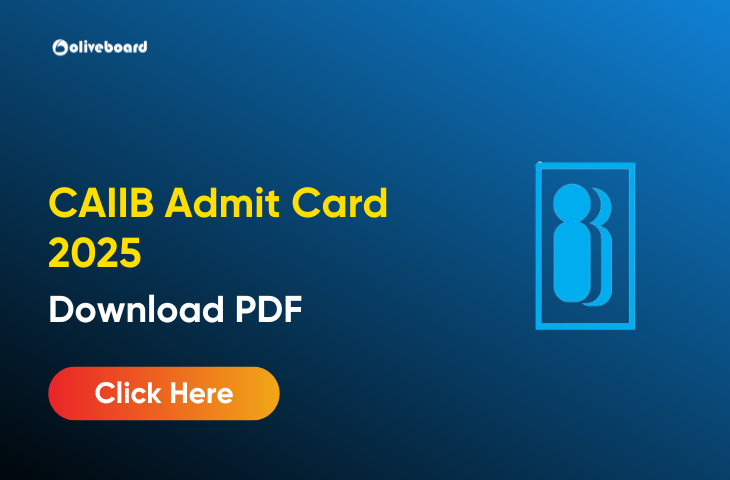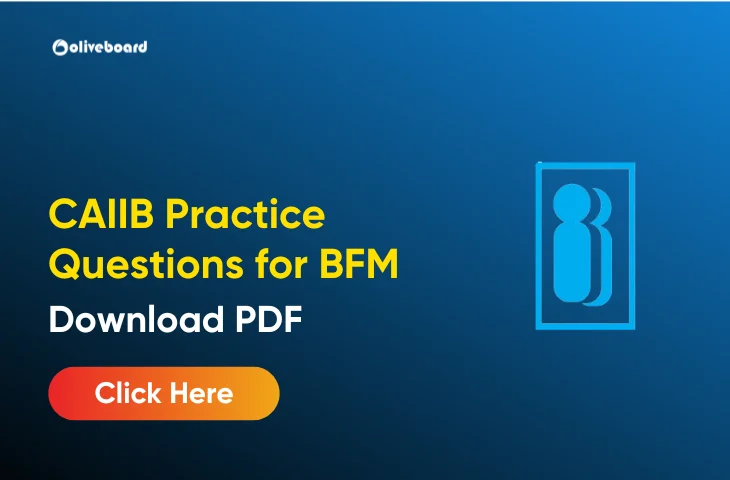CAIIB Practice Questions for BFM
The Certified Associate of Indian Institute of Bankers (CAIIB) exam is a key milestone for banking professionals looking to advance their careers. One of the essential papers in this exam is Bank Financial Management (BFM), which covers various aspects of banking operations, financial markets, and management strategies.
To succeed in the CAIIB BFM exam, thorough practice is necessary. One of the best ways to prepare is by working on CAIIB Practice Questions for BFM. This article provides a set of 50 practice questions to help you test your knowledge and boost your preparation for the CAIIB BFM exam. Additionally, you can download the free PDF containing these questions for offline practice.
Why Are CAIIB Practice Questions Important?
Before diving into the questions, let’s discuss why practicing these questions is so crucial for your exam success:
- Improves Understanding: Practice helps solidify concepts and ensures you understand the core principles of financial management.
- Boosts Confidence: By solving a wide range of questions, you become more comfortable with the exam format and question types.
- Time Management: Practicing questions allows you to gauge how much time you need to allocate to each section, improving your exam time management.
- Identifying Weak Areas: It helps you identify areas where you’re struggling, so you can focus on improving those topics.
50 CAIIB Practice Questions for BFM
Here are 50 practice questions that will help you strengthen your knowledge and prepare well for the CAIIB BFM exam. These questions cover various topics within the BFM syllabus, such as financial markets, capital budgeting, risk management, and the functioning of banks.
Financial Markets and Instruments
- What is the difference between equity and debt capital?
- Explain the concept of ‘Capital Market’. How does it differ from the ‘Money Market’?
- What is the role of a ‘stock exchange’ in financial markets?
- How do government securities affect the overall financial market?
- What is ‘derivatives market’, and how does it impact the banking industry?
Banking and Financial System
- What are the functions of a commercial bank in the financial system?
- Define the term ‘maturity transformation’ in the context of banks.
- What is Basel III, and how does it influence banking operations?
- How does an increase in the cash reserve ratio (CRR) affect the banking system?
- Discuss the role of the Reserve Bank of India in regulating the financial system.
Capital Budgeting
- What are the main methods used in capital budgeting decisions?
- Explain the concept of Net Present Value (NPV) and how it is used in investment decisions.
- What is the internal rate of return (IRR), and why is it important in capital budgeting?
- Explain how the payback period method is used to evaluate projects.
- What are the advantages and disadvantages of using the profitability index (PI) in capital budgeting?
Risk Management
- What is financial risk management, and why is it crucial for banks?
- Explain the concept of ‘Credit Risk’ and its management techniques.
- What is operational risk, and how do banks mitigate it?
- What is market risk, and what strategies can banks use to manage it?
- Discuss the concept of liquidity risk and its impact on financial institutions.
Bank Management
- What are the key functions of a bank’s management team?
- How does effective capital management contribute to a bank’s success?
- Explain the term ‘Asset Liability Management (ALM)’ in banking.
- What are the different types of financial ratios used in bank performance evaluation?
- How does the concept of corporate governance apply to banks?
International Finance
- Explain the role of foreign exchange markets in international finance.
- What is the ‘Balance of Payments’ and why is it important for a country’s economy?
- What are the risks associated with foreign exchange trading for banks?
- How do exchange rates affect international trade and finance?
- What is the concept of currency swaps and how do they benefit multinational companies?
Banking Products and Services
- What is the role of derivatives in managing financial risk for banks?
- How do banks manage interest rate risk using financial products?
- Explain the concept of ‘Securitization’ and its impact on financial markets.
- What is a Letter of Credit (LC), and how is it used in international banking?
- What is the difference between ‘forward’ and ‘futures’ contracts?
Financial Regulations
- What is the purpose of the Financial Stability and Development Council (FSDC)?
- Explain the concept of the ‘Prudential Norms’ set by the Reserve Bank of India.
- What is the significance of the Dodd-Frank Act in banking regulations?
- What is the role of the Securities and Exchange Board of India (SEBI) in financial regulation?
- Discuss the role of banking regulators in maintaining financial stability.
Financial Analysis
- What is the significance of liquidity ratios in assessing a bank’s financial health?
- Explain the relationship between return on assets (ROA) and return on equity (ROE).
- What does the ‘capital adequacy ratio’ indicate about a bank’s financial condition?
- How do banks use risk-adjusted return on capital (RAROC) in decision-making?
- What is a ‘Stress Test’, and why is it important for banks to conduct it?
Investment Management
- Explain the concept of portfolio management in banks.
- How do banks diversify their investment portfolios to minimize risk?
- What is the role of mutual funds in investment management?
- How do banks decide on investment strategies in fluctuating markets?
- What are the key performance indicators (KPIs) used to evaluate investment performance?
Download the Free PDF Here
Candidates can download the 50 Important Practice Questions of the BFM Paper for Free. We have mentioned below the direct link to download the e-book for all aspiring candidates.
How To Download The Free CAIIB Practice questions for BFM?
Step 1: Click on the download link. You will be taken to Oliveboard’s FREE E-Books Page.

Step 2: Register/Login to the Free E-Books Page of Oliveboard (It is 100% free, You just enter your valid email ID and a password to be able to download the CAIIB Practice Questions for BFM pdf.
Step 3: After Logging in, you will be able to download the free e-book by clicking on “click here” as shown in the snap below.

Questions in the CAIIB Practice Questions for BFM Pdf:
Q1. Which of the following is an example of a Tier I capital instrument?
a. Bonds
b. PNCPS
c. Preference Shares
d. Equity Shares
Q2. A key characteristic of a ‘Zero Coupon Bond’ is that it:
a. Pays a fixed interest annually
b. Does not pay interest but is sold at a discount
c. Does not pay interest and is redeemed at face value
d. Pays floating interest
Q3. The primary objective of Risk-Based Capital Adequacy is:
a. To calculate a bank’s operating costs
b. To ensure the bank can cover its operational risks
c. To ensure the bank has sufficient capital to cover its risk exposures
d. To assess the bank’s profitability
Q4. Which of the following describes the Capital Adequacy Ratio (CAR)?
a. The ratio of a bank’s total capital to its total assets
b. The ratio of a bank’s capital to its risk-weighted assets
c. The ratio of a bank’s reserves to its liabilities
d. The ratio of a bank’s total liabilities to equity
Q5. Gilt-edged securities are:
a. Securities with high credit risk
b. Securities issued by the government
c. Corporate bonds with no risk
d. Low-interest-rate bonds issued by banks
Q6. What does the PPP theory primarily predict?
a. The long-term tendencies between the price level and exchange rates
b. Short-term interest rate changes
c. Inflation rates in developing countries
d. The effect of tariffs on international trade
Q7. In Foreign Exchange, an arbitrageur:
a. Manipulates the exchange rate to earn profits
b. Profits from differences in interest rates
c. Simultaneously buys and sells currencies in different markets
d. Causes an exchange rate to fluctuate
Q8. The term ‘Floating Rate Bond’ refers to a bond:
a. Whose interest rate is adjusted periodically based on a reference rate
b. With no interest payments
c. Whose rate is fixed at issuance
d. Issued by private corporations
Q9. ICAAP stands for:
a. Internal Credit Adequacy and Profitability
b. International Capital Assessment and Policy
c. Internal Capital Adequacy Assessment Process
d. Integrated Capital and Asset Protection
Q10. A speculator in foreign exchange markets aims to:
a. Buy currency at a low price and sell it at a higher price
b. Manipulate the exchange rate for profit
c. Trade for governments and central banks
d. Stabilize exchange rate fluctuations
Q11. The risk-weighted assets are used to:
a. Determine the capital adequacy ratio of a bank
b. Determine the profit margins for loans
c. Calculate the market price of stocks
d. Assess the total assets of the bank
Q12. Which of the following instruments are used for Foreign Exchange Hedging?
a. Treasury Bonds
b. Options and Forward Contracts
c. Bonds and Stocks
d. Futures and Swaps
Q13. What is the primary function of Bank Financial Management (BFM)?
a. To manage the bank’s cash flow
b. To manage a bank’s financial stability and risk
c. To design new financial products for the bank
d. To manage marketing for financial services
Q14. The Net Interest Margin (NIM) of a bank is calculated by:
a. Dividing interest expenses by total liabilities
b. Dividing net interest income by total assets
c. Dividing the difference between interest income and interest expense by total assets
d. Subtracting operating costs from interest income
Q15. In the context of Risk Aggregation, ICAAP aims to:
a. Combine capital from different sources
b. Aggregate various types of risks to assess total capital needs
c. Ensure that total risk exposure is diversified across markets
d. Minimize capital allocation based on risk exposure
Q16. A Deep Discount Bond:
a. Pays regular interest to investors
b. Is issued at a significant discount to its face value
c. Has a floating interest rate
d. Is only available for government entities
Q17. The repo rate is:
a. The rate at which banks lend to customers
b. The rate at which banks borrow from the central bank
c. The rate at which commercial banks lend to each other
d. A form of interest rate on deposits
Q18. A cross-currency swap is primarily used for:
a. Hedging against interest rate fluctuations
b. Hedging against exchange rate fluctuations
c. Managing a bank’s liquidity position
d. Managing the bond portfolio
Q19. A Tier II capital instrument is generally:
a. Issued by the central bank
b. Available for long-term funding only
c. Less permanent than Tier I capital but provides financial support in times of crisis
d. Used to fund operational expenses
Q20. Revaluation Reserves are classified under:
a. Tier I capital
b. Tier II capital
c. Non-performing assets
d. Liquid assets
Tips for Effective Preparation
While practicing these questions, keep these tips in mind to maximize your performance:
- Time Your Practice: Try to complete each set of questions within a specific time frame to simulate real exam conditions.
- Analyze Your Mistakes: After solving the questions, review the incorrect answers and understand why you got them wrong.
- Make Notes: Take note of important formulas, concepts, and definitions to help you revise effectively.
- Stay Consistent: Set a routine and make sure to practice regularly to build confidence and improve your speed.
Conclusion
The 50 CAIIB Practice Questions for BFM are an excellent tool for students preparing for the CAIIB BFM exam. By practicing these questions, you can improve your understanding of key concepts, strengthen your problem-solving skills, and boost your exam confidence. Remember to download the free PDF and start practicing today
CAIIB Practice Questions for BFM – FAQs
The CAIIB BFM exam focuses on Bank Financial Management, testing knowledge on financial principles, risk management, and financial products.
Practice questions help reinforce key concepts, improve time management, and identify areas for improvement in BFM topics.
- CAIIB Electives Exam Analysis 2025, June All Shifts Review

- CAIIB BRBL Exam Analysis 2025, June All Shifts Review

- CAIIB ABFM Exam 2025 Analysis, Shift 1 & 2 – 22nd June 2025

- CAIIB BFM Exam Analysis 2025, All Shift Analysis Released

- CAIIB ABM Exam Analysis 2025, All Shifts, May-June Cycle

- CAIIB Admit Card 2025, Check Steps to Download Call Letter


Hello there! I’m a dedicated Government Job aspirant turned passionate writer & content marketer. My blogs are a one-stop destination for accurate and comprehensive information on exams like Regulatory Bodies, Banking, SSC, State PSCs, and more. I’m on a mission to provide you with all the details you need, conveniently in one place. When I’m not writing and marketing, you’ll find me happily experimenting in the kitchen, cooking up delightful treats. Join me on this journey of knowledge and flavors!
